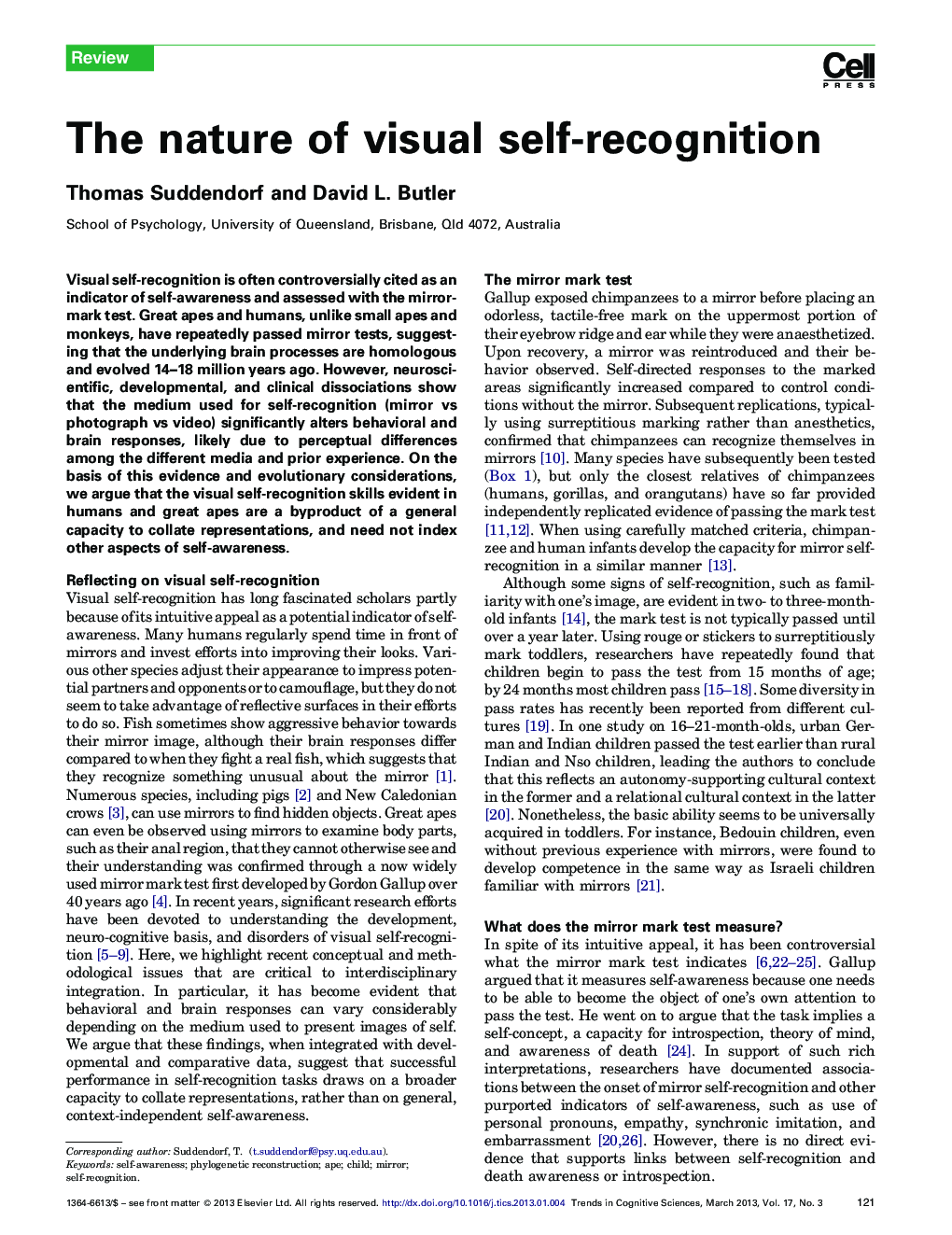| Article ID | Journal | Published Year | Pages | File Type |
|---|---|---|---|---|
| 141625 | Trends in Cognitive Sciences | 2013 | 7 Pages |
Visual self-recognition is often controversially cited as an indicator of self-awareness and assessed with the mirror-mark test. Great apes and humans, unlike small apes and monkeys, have repeatedly passed mirror tests, suggesting that the underlying brain processes are homologous and evolved 14–18 million years ago. However, neuroscientific, developmental, and clinical dissociations show that the medium used for self-recognition (mirror vs photograph vs video) significantly alters behavioral and brain responses, likely due to perceptual differences among the different media and prior experience. On the basis of this evidence and evolutionary considerations, we argue that the visual self-recognition skills evident in humans and great apes are a byproduct of a general capacity to collate representations, and need not index other aspects of self-awareness.
